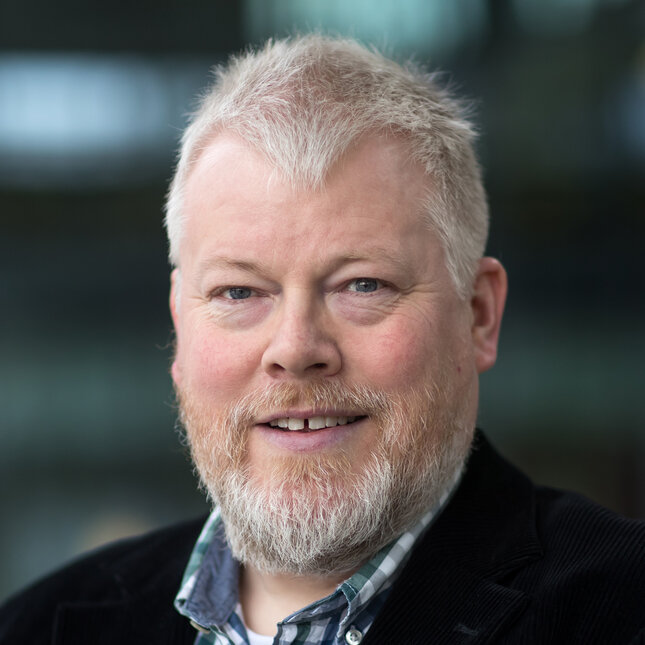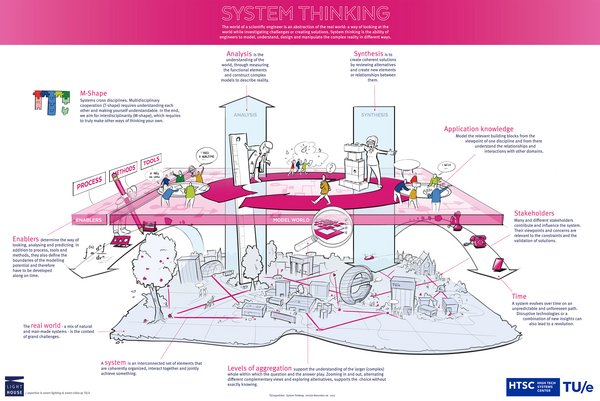Ton Peijnenburg and Katja Pahnke, TU/e High Tech Systems Center
Systems thinking a highly valuable skill in the region
The High Tech Systems Center (HTSC) was launched a few years ago in order to bundle all the research surrounding mechatronics and high-end mechanical engineering at Eindhoven University of Technology. The center's initiators wanted to add systems thinking to the classical disciplines already present in the university – mechanical engineering, electrical engineering, computer science and physics. There is a great deal of support for embedding systems engineering in all the departments.

True innovations are often a product of cross-fertilization across disciplines. If you are developing new products and technology to address societal problems, you need a wide, system-based perspective of the whole issue to be able to reach the best solution. And certainly now that systems are becoming increasingly complex and involving more and more developers, you cannot get by without a holistic approach. According to Ton Peijnenburg, a Fellow at the High Tech Systems Center (HTSC): ‘Systems engineering is an elementary aspect for the engineer of the 21st century. This view is not only held at the HTSC, but is also supported by the literature.’
He continues: ‘In recent decades the emphasis at the university has been increasingly on science and analysis, and design and synthesis have become of secondary importance. This is because in academia, you have to publish to get noticed. And it is just easier to publish on scientific, analytical research than it is on design. Of course some people at TU/e do obtain a PhD for a prototype design, but these are rare exceptions.’
Director of HTSC Katja Pahnke underlines the fact that the value of good design linked with thorough systems engineering needs to permeate through every level of the university far more than it is at present. ‘We are continuously lobbying to get systems thinking really on the agenda of all the departments. This won't happen by simply making an announcement now and again. We have really taken hold of the subject and are trying to get people on board at every level.’
Frontrunner
The call from HTSC is not falling on deaf ears. TU/e has incorporated the university-wide embedding of systems engineering into its strategic mission for growth towards 2030. Peijnenburg: ‘Only recently I was invited to a meeting of all the program directors at TU/e, where I once again drew attention to the theme. They absolutely recognize that systems engineering deserves a place in their teaching, if only because it ties in so well with the challenge-based approach of students. Fortunately various departments already have many courses which explore these aspects of the subject matter. We are now working together to assess this in order to define a curriculum for systems engineering and make the program explicit.’
HTSC Fellow Ton Peijnenburg: ‘Systems engineering is an elementary aspect for the engineer of the 21st century.’
However, it is not our ambition to set up a separate department for systems engineering. ‘But what we would really like is a researcher who can act as a frontrunner for systems engineering’, says Pahnke, who admits to already having a suitable candidate in mind. ‘Our challenge right now is to find a location.’
The HTSC has already anticipated a part of the educational challenge by starting a PDEng design program, Mechatronic Systems Design (MSD). And systems thinking is strongly integrated in the curriculum of the first year of this program. This module is based on the well-established Software Technology PDEng in the field of systems architecture, later adopted by the Automotive Systems Design PDEng. The module is now being given to all PDEng trainees at TU/e. Trainees learn how to do systems engineering and how to model at system and software level. ‘There is a huge gap between the way mechatronics engineers and software engineers perceive their environment. ‘In the MSD program we are trying to bridge this gap.’ During the industrial assignment in the second year the trainees can put all of their knowledge into practice right away.
The HTSC has already launched around fifteen MSD-ers onto the labor market and it is anticipated that within the sector there will be a need for some fifty new systems engineers every year. ‘And certainly with the start of the Eindhoven Engine with its typically PDEng-type research', says Pahnke. ‘Systems thinking is a skill which is highly valuable in this region.’
Nonconformity

How do you tackle a systems engineering project? ‘To start with, you have to thoroughly consider the problem’, answers Peijnenburg. ‘What problem do you intend to solve? And what is the context, the bigger picture? Then work out who the stakeholders are. Create a picture of what you are considering, and translate that into simple models that you can use at a high level of abstraction to say something about the performance of your design. Continue refining the model as you learn more. And be sure to examine several directions in which solutions may be found, and compare these on the basis of your criteria. Do this objectively on the basis of quantitative analysis and not based on subjective gut feelings.’
A good systems engineer should be a true all-rounder. ‘Of course you don't have to be an expert in all disciplines, but you must have some affinity with them all’, says Pahnke. ‘That inquisitiveness concerning other fields is an important characteristic of systems engineers, as well as the ability to master an unfamiliar discipline. This is something that can be learned through practicing it a couple of times. It is true that a newly qualified systems engineer will be lacking experience, but he or she will have the attitude and learning power to learn new disciplines that are relevant to the problem in hand.’
Peijnenburg: ‘Systems engineers are happy to take ownership of a problem. The ultimate performance of a system is determined by many component subsystems. For example, an architect distributes the margins of these components on the basis of his past experience. A systems engineer of such a component might find that they suddenly get into trouble and threaten to fail. The systems engineer must take action. It is no good saying they don't know the answer, they are expected to offer a possible solution. This may be by considering the total problem from a systems perspective, seeing if there is room for maneuver elsewhere in the system, and then consulting with the systems engineer of that component to see what can be done. That is a true multidisciplinary approach.’
‘A systems engineer must dare to be different’, says HTSC director Katja Pahnke.
Pahnke concludes: ‘Finally, as a systems engineer you have to dare to be different. There is nothing wrong with consensus, but a certain amount of nonconformity is also required. A common signature of systems engineers in leading companies is that they dare to make audacious proposals, they think outside the box and stand up for what they believe. This is a characteristic you must be born with.’
Author: Alexander Pil, Mechatronica & Machinebouw Edition 04 2019
